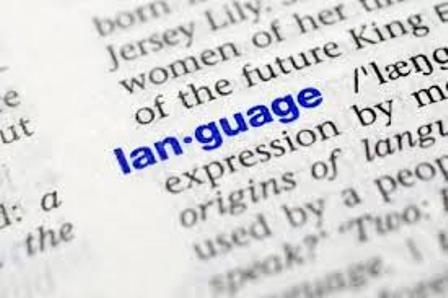The United Nations General Assembly which designates a number of "International Days" to mark important aspects of human life and history has formally recognized the International Mother Language Day (IMLD), which was proclaimed by the General Conference of the United Nations Educational, Scientific and Cultural Organization (UNESCO) on 17th November 1999. Thereafter the First observance of the IMLD was held on 21st February 2000 and is annually observed by about 188 states for promoting awareness of linguistic and cultural diversity and multilingualism.
 Today (21) the people of the world observe the International Mother Language Day 2016 under the theme "Qualityeducation,language(s) of instruction and learningoutcomes."
Today (21) the people of the world observe the International Mother Language Day 2016 under the theme "Qualityeducation,language(s) of instruction and learningoutcomes."
The date 21st February has been proposed by Rafiqul Islam, a Bengali living in Vancouver, Canada who wrote a letter to the seventh Secretary-General of the United Nations Kofi Anan on 9th January 1998 asking for steps to protect all the languages of the world from the possibility of extinction. And also to declare an International Mother Language Day. The date 21st February corresponds to the day in 1952 when students from the University of Dhaka, Jagannath University and Dhaka Medical College, demonstrating for the recognition of Bangla as one of the two national languages of East Pakistan, were shot dead by police near the Dhaka High Court in the capital of what is called today "Bangladesh".
According to the reported facts, there are about 6,909 spoken languages in the world today. About 2,000 out of those languages have fewer than 1,000 speakers. The most popular language in the world is Mandarin Chinese. There are nearly 1,213,000,000 people in the world that speak that language. Spanish and English languages are in the second and third places respectively. Tamil remains in twentieth while Sinhalese is in sixty second place. Hindi, Russian and Japanese could be seen among the top ten.
Time by time a large number of languages spoken by the people have been going towards the extinct languages. Approximately one language out of presently spoken languages is unfortunately missed for the people per two weeks. The language extinction and language death are often equated.
On 16th May 2007 United Nations General Assembly proclaimed 2008 as the "International Year of Languages", concerning the resolution adopted by the General Conference of the UNESCO at its thirty third session on 20 October 2005. It was intended to address issues of linguistic diversity (in the context of cultural diversity), respect for all languages, and multilingualism. In that year also several languages were extinct from the people. Marie Smith Jones born on 14th May 1918 was the last surviving speaker of the "Eyak" language of Southcentral Alaska. Although she had nine children with Smith, they did not learn to speak Eyak due to the social stigma associated with it at the time. She worked with linguist Michael E. Krauss, who compiled a dictionary and grammar of it. Marie's last older sibling died in the 1990s and Marie died on 21st January 2008. Proclaiming this year as the "International Year of Languages" might be a honor to her.
The improvement of a language remains on the speech than the document. Unspoken language rapidly goes towards the extinction. The International Languages Day is observed with the purpose in providing solutions for the challenges faced by the universal languages. Extinction of languages from the practice is an improper result of the Globalization. Inside of the globalization the Sinhalese (Sihnala) is also facing a risky situation. According to the Prof. Malani Endagama Sinhalala has become as an extinct language. The social evolution towards English since the childhood is affecting the future betterment of the Sinhala language.
The best way to teach the mother language for the children is initiating the Fundamental Education with the mother tongue. But today the education of the country is converting to the English medium from the Pre-school education to the University education. This causes to sweep out the Sinhalese from the educations sector. The capacity of the vocabulary used by present society is rapidly being narrowed. This will support the language to step towards the extinction more and more. The English literacy of Sri Lanka remains at 10 percent and this 10 includes the scholars and intellectuals. Not exposing the Sinhala language for the modern knowledge by those scholars who transact with that knowledge causes to weaken the utility of the language. The improvement of the language is declined when it is not touched with new concepts and not producing new terms.
While there are many social factors causes to destroy the language, the Mass Media also misusing the language with mixed languages, mispronunciations and violating the grammar rules. The Language is the most powerful instrument of preserving and developing our tangible and intangible heritage. Hence all the moves taken to protect and dissemination of our mother tongues of Sinhalese (Sinhala) will serve not only for the existence of the language but also for the existence and the progress of the future generation.
-Lahiru Fernando-




















